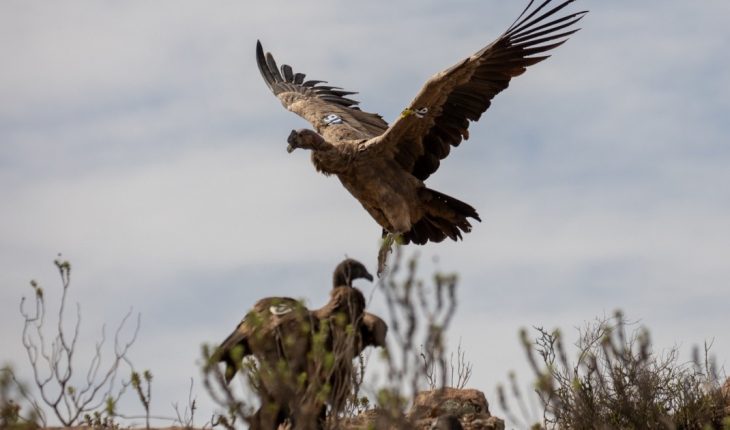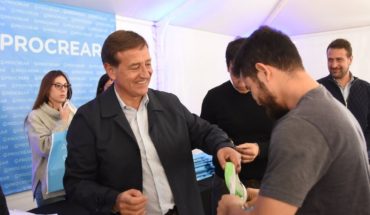Seven baby condors born in captivity were released at the Sierra Pailemán Biostation, in Río Negro, which share the Ecopark and the Bioandina Foundation, in what meant the largest release of these birds made in Argentina.Four of these animals were bred and rehabilitated in the Buenos Aires Ecopark, and of the seven six bear Mapuche names. One of the offspring is Piuque Wenú (Big Heart), who was rescued by personnel from the Nahuel Huapí National Park, in Villa La Angostura, Neuquén, after being found seriously intoxicated by ingestion of lead bullets.
Tayel (Sacred Song) was born in the Temaikén Biopark, was artificially incubated and raised with the assistance of latex puppets, as was Kume Feleal (Buen Vivir); while Kurruf (Wind) was raised there after his rescue by members of the Salta Native Wildlife Station. For his part, Mawun (Rain) was born in the Biopark La Maxima, in Olavarría, as Lihuen (Light of Life). Finally, Pachamama, which in Quechua and Aymara means Mother Earth, was born and raised in ZooParc de Beauval, in Francia.Se it was the seventeenth release of the “Return of the Condor to the Sea” program, which already has 64 birds that were returned to nature on the Atlantic coast.Meanwhile, 215 of that birds were released throughout South America as part of the Andean Condor Conservation Program, which is carried out “with intense field work and sophisticated satellite tracking systems,” said a statement from the Ecopark.
From these follow-ups, it is known that “10 condors were born naturally on the plateau, from the birds that were released there,” they explained from the Ecopark to Télam. “We know that they unite in their flights the mountain range with the sea, reaching distances greater than 600 kilometers from their place of release, evidencing the key places for the conservation of these fabulous birds,” he said. Federico Iglesias, undersecretary in charge of the Ecopark, said that “the release of the chicks, in addition to being the most exciting moment of the whole process, is where the necessary work of articulation between different conservation actors is evident.” The Program has the support of the Secretariats of Environment and Sustainable Development of the Nation, Río Negro, Chubut and Neuquén, the Temaikén Foundation, La Máxima Biopark, Aerolineas Argentinas, the Bioparc Foundation, Grand Parc du Puy du Fou, AFdPZ and the Beauval Nature Association of France.On the other hand, the Ecopark announced the restoration of “the traditional cage of the condors”, a work that required more than three tons of steel to replace some of the 16 columns and beams, and in which the perimeter and diagonal arches and all the components affected by the deterioration of the structure were supplanted. The cage was built to decorate the Plaza de Mayo for the celebrations of the Mayan Festivities at the beginning of the twentieth century, an installation directed by the engineer Jorge Newbery, pioneer of Argentine aviation, who was then general director of Electrical and Mechanical Installations of the City of Buenos Aires. After the celebrations, the then director of the zoo, Clemente Onelli, asked the mayor Alberto Casares to allocate it for the condor enclosure. On the grounds of Palermo it was mounted again with a cover of woven wire and the enclosure was set with a replica of a rock formation known as Piedra del Águila. In the cage, of 600 square meters, large stones brought from San Juan and La Rioja were added, and there lived condors, caranchos, eagles and suede. When the cleaning tasks are completed, the enclosure will once again house condors that belong to the Andean Condor Conservation Program that cannot be released into their natural environment.





